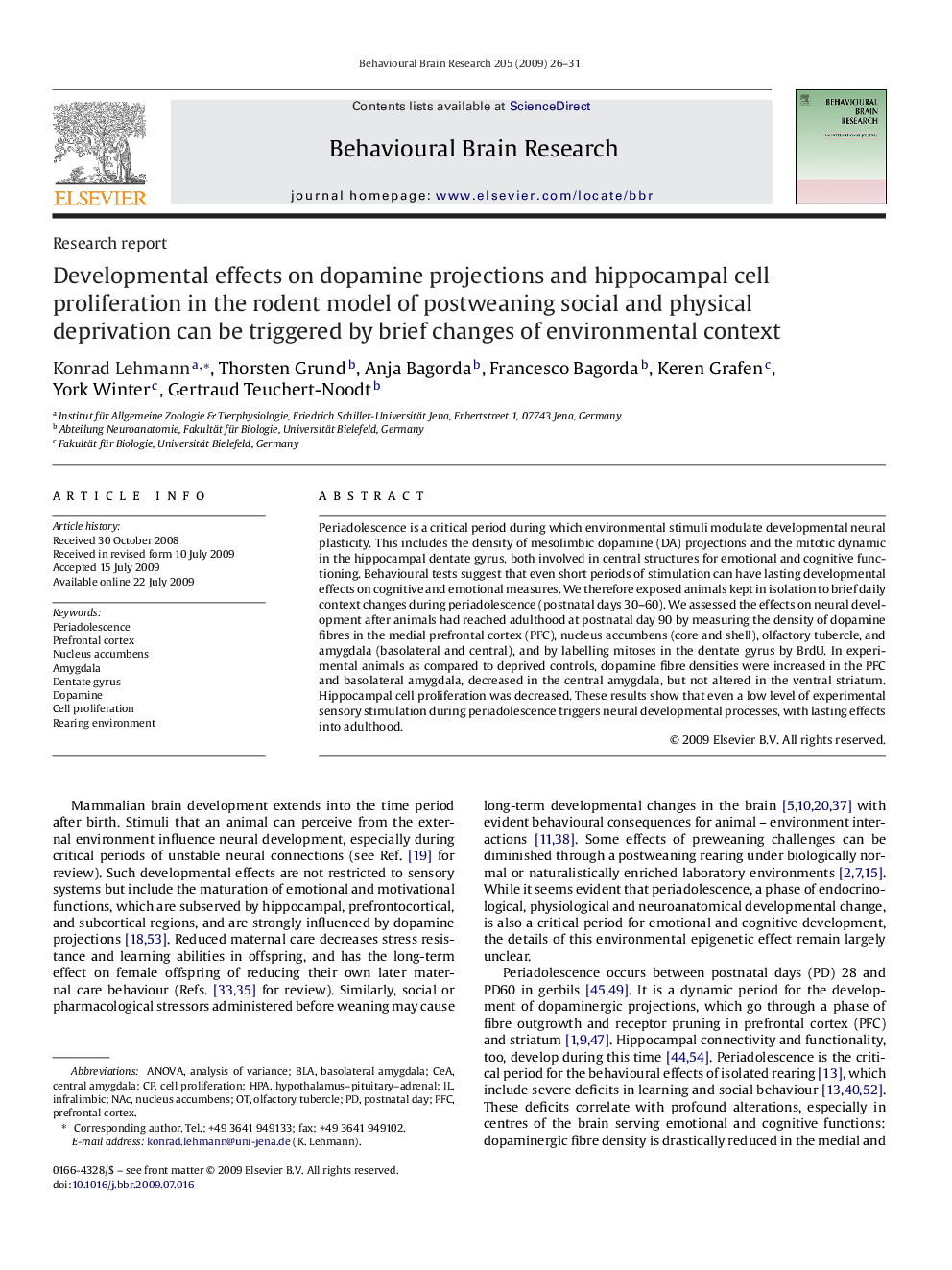| Article ID | Journal | Published Year | Pages | File Type |
|---|---|---|---|---|
| 4314505 | Behavioural Brain Research | 2009 | 6 Pages |
Periadolescence is a critical period during which environmental stimuli modulate developmental neural plasticity. This includes the density of mesolimbic dopamine (DA) projections and the mitotic dynamic in the hippocampal dentate gyrus, both involved in central structures for emotional and cognitive functioning. Behavioural tests suggest that even short periods of stimulation can have lasting developmental effects on cognitive and emotional measures. We therefore exposed animals kept in isolation to brief daily context changes during periadolescence (postnatal days 30–60). We assessed the effects on neural development after animals had reached adulthood at postnatal day 90 by measuring the density of dopamine fibres in the medial prefrontal cortex (PFC), nucleus accumbens (core and shell), olfactory tubercle, and amygdala (basolateral and central), and by labelling mitoses in the dentate gyrus by BrdU. In experimental animals as compared to deprived controls, dopamine fibre densities were increased in the PFC and basolateral amygdala, decreased in the central amygdala, but not altered in the ventral striatum. Hippocampal cell proliferation was decreased. These results show that even a low level of experimental sensory stimulation during periadolescence triggers neural developmental processes, with lasting effects into adulthood.
